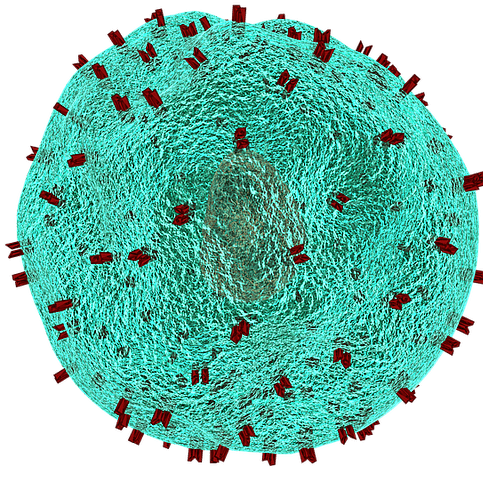When the team at Freiburg University discovered the domain of the T-cell receptor they were surprised that the newly-coined “RK motif” had never been identified. According to a recent article in Medical Xpress, for over thirty years immunologists have been researching the T-cell receptor.
The RK motif was discovered through a combination of biochemistry, immunology, and synthetic biology. Results of pre-clinical trials, which were published in the journal Nature Immunology, have shown the RK motif to improve immunology against cancer.
The team showed that the RK motif is usually hidden in order to prevent T cell activation. It is only exposed after binding to a foreign substance (antigen). It is possible that this explains why the RK motif had not been identified in the past.
About T-Cells
T-cells, also known as killer cells, perform a variety of functions. They are responsible for the destruction of cells in the body that are infected by viruses and bacteria, as well as cancer cells.
The immune system contains T-cells that are covered with T-cell receptors (TCRs) composed of individual proteins. When the TCR identifies a tumor or infected cell, a lymphocyte-specific kinase adheres to the TCR at the newly-described RK motif. The TCR’s binding switch turns the T-cell into a killer cell.
The discovery creates a connection between a threat and activating an immune response while focusing on the immune system’s operating principle.
About CAR T-cell Therapy
CIBSS member Dr. Robert Zeiser, coordinating with the Center for Chronic Immunodeficiency, explained that preclinical studies demonstrated that CAR T-cells (chimeric antigen receptor cells) possessing the RK motif can destroy more cancer cells than T-cells without the RK motif.
CAR T-cell therapy has been studied for years at the Medical Center, primarily in clinical trials to treat leukemia.
The CAR T procedure involves drawing blood from the patient and separating out the T-cells. Then, by genetically engineering the T-cells, synthetic CAR T-cells are produced in the lab. These receptors bind to the surface of the T- cells allowing them to attach to antigen or tumor cells.
Once the engineered T-cells begin to express CAR, they are expanded in the lab into the hundreds of millions. The procedure is finalized by the engineered CAR T-cells being infused back into the patient.
At this point, the reinfused, engineered cells will multiply. The engineered receptor will guide the cells so that they will recognize and kill the antigen-laden cancer cells.
With this new discovery, doctors can control T-cells in a more precise manner. This is an integrative approach enabling more detailed knowledge of the molecular signals.







